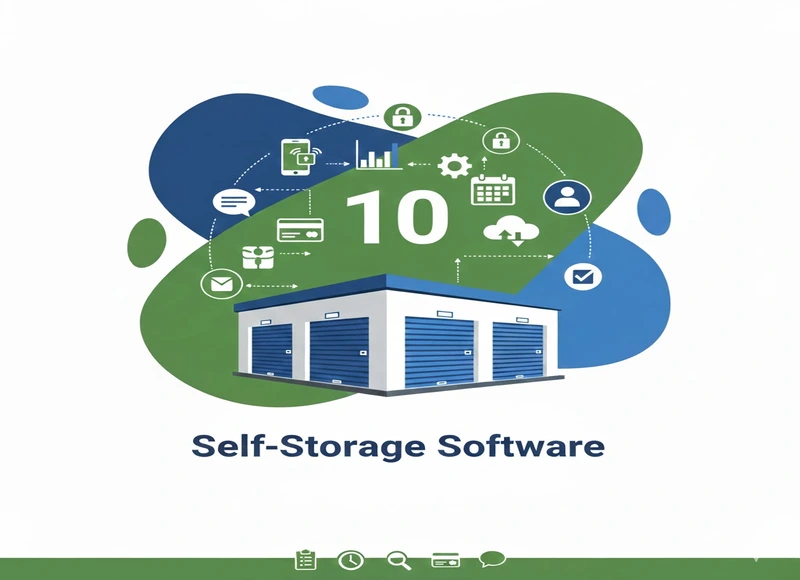Agile vs Waterfall: How to Choose the Right Methodology
-
Last Updated:
07 Oct 2025
-
Read Time:
16 Min Read
-
Written By:
 Harshita Toplani
Harshita Toplani
-
995
Table of Contents
Ever wondered if your project needs the speed of Agile or the structure of Waterfall? This playful breakdown untangles the jargon and helps you spot which approach makes your work flow smarter.
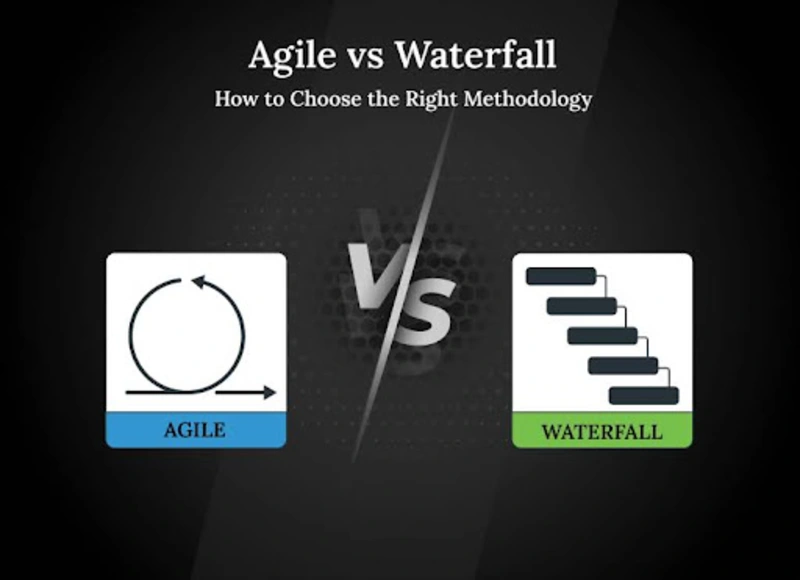
Software Engineers and Developers must be very familiar with the Agile & Waterfall methodologies. However, being from a Marketing background, product managers often need to learn more about these methodologies in-depth.
If you are someone, whether a prospective software developer, marketer, or someone dealing with technical terminologies, and want to clear your knowledge of SDLC. This guide was created to clarify your doubts and provide you with a deep understanding of Agile and Waterfall methodologies, their advantages and disadvantages, what differentiates them from one another, and when to apply each approach on a project basis.
What is Agile Methodology?
Agile is a way to manage projects that focuses on doing work in short, quick cycles called sprints (usually 1–4 weeks). Instead of trying to plan everything from start to finish, teams build small parts, get feedback, and adjust as they go. It’s like building one room of a house, checking if it looks good, then moving to the next room—rather than building the whole house at once and hoping for the best, as is often the case with the waterfall methodology.
Agile is not just a popular methodology but a standard software development methodology that is saving the time of more than 86% of software developers. Most of the software development companies have adapted the agile methodology in their everyday lives. Various software development processes are in use, since Scrum is a favorite for about 87% of teams, followed by Kanban, which garners 56% preference, and then Lean and XP. Waterfall teams generally follow a more structured and sequential approach to working, lacking the flexibility that an Agile team offers.
It follows a flexible, iterative cycle of steps:
Concept & Planning – Define a basic idea of what the product should do, focusing on goals and user needs (not every tiny detail).
Product Backlog Creation – List all desired features, tasks, and improvements, prioritized by value.
Sprint Planning – Choose a few top-priority items from the backlog to work on in a short cycle (called a sprint, usually 1–4 weeks).
Development – Build small parts of the product based on selected backlog items during the sprint.
Testing – Test the feature(s) continuously within the sprint to catch bugs early.
Review & Feedback – At the end of each sprint, demonstrate the work done to stakeholders and collect feedback.
Retrospective – The team reflects on what went well and what could improve before starting the next sprint.
Repeat – Go back to sprint planning and start the next cycle, adjusting based on feedback and changing priorities.
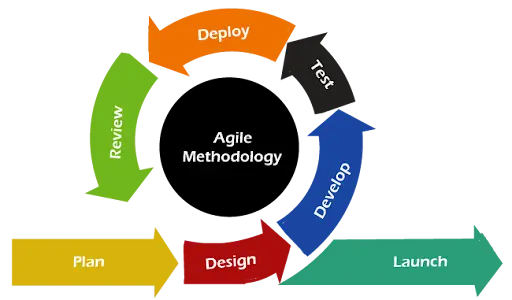
And it's not just because it's a buzzword: Agile projects were 2.5 times likely to succeed than traditional ones. Agile-skilled teams tend to complete their projects at least 50% faster, while client satisfaction goes up by another 20%.
Advantages of Agile Methodology
Using the Agile Methodology in software development has been beneficial for long-term and complex projects, with the process following an iterative & incremental process. Due to its faster development, customer satisfaction, and improved product quality.
Below are some top advantages of the agile methodologies :
- Faster delivery and quick results
Agile breaks work into small sprints that can release usable product features on a regular basis instead of waiting until the very end. That way, businesses get to market faster and realize value sooner.
- Flexibility and adaptability
Agile teams can easily change plans if requirements or priorities shift. This is perfect for fast-moving industries where customer needs or market trends change quickly.
- Better product quality
Testing happens throughout the project, not just at the end. This means bugs and issues are caught early, leading to fewer problems and higher-quality software.
- Increased customer satisfaction
Customers are involved at every stage, giving feedback on early versions. Their suggestions can be added quickly, so the final product is more likely to meet their real needs.
- Improved team collaboration
Agile encourages daily meetings and open communication. Everyone knows what’s happening, which builds stronger teamwork and trust.
- Greater transparency and visibility
By using tools like task boards, burndown charts, and progress updates, everyone, including stakeholders, gains quick visibility into upcoming events and progress.
- Better risk management
Risks and mistakes are detected early because the work is put forth in these short cycles and continually reviewed before they become a challenge.
- Continuous improvement
Retrospectives in agile teams are held to analyze what went well or not so well, with the constructive feedback going to the further refining of processes and enhancing of performance across time.
- Higher project success rates
Studies and reports show Agile projects are more likely to succeed compared to traditional models.
Disadvantages of Agile Methodology
Agile is a controversial approach given its flexibility and capacity for quick delivery. A major concern revolves around the inability to predict and scale. With short, changing cycles, Agile struggles to give a lock on timelines, budgets, or outcomes. Junade Ali, author of Impact engineering, stated 65% of Agile projects failed to meet expectations because of poor upfront planning. Engineering practitioners found that Agile projects were 268% more likely to fail when requirements were unclear.
Key Disadvantages in Simple Terms:
- Hard to Predict Timelines & Budgets – Agile changes often, so planning exact delivery dates or costs is tricky.
- Less Documentation – It focuses on working products, which means fewer written details that may be needed later.
- Scaling is Tough – Works great for small teams, but bigger projects can get messy without proper coordination.
- Needs Strong Teamwork – If the team isn’t skilled or collaborative, Agile can fall apart.
- Heavy Customer Involvement – Agile needs constant feedback. If customers aren’t available, progress slows down.
- Risk of Scope Creep – Too much flexibility can lead to adding too many features, delaying the project.
- More Meetings = More Time – Daily stand-ups, sprint planning, and retrospectives can eat into work time.
- Team Burnout – Fast-paced work and constant changes can exhaust teams if not managed well.
- Not Great for Fixed Projects – If your project has strict timelines, budgets, or compliance needs, Agile might not fit.
Agile remains great for smaller teams, but as organizations upscale Agile into larger projects, communication gaps form, whereas misalignment of teams and fragmented results may arise. Also, the main issue with less documentation could occur during maintenance or handovers. It is all about collaboration within the team, yet customer involvement is crucial and not always easy to sustain under Agile.

Principles of Agile Methodology in Project Management
Agile is a new approach to project management emphasizing flexibility, working quickly, using feedback, and driving continuous improvement. Originally aimed for software developers, but now used throughout industries-allowing teams to respond to evolving situations and interact closely with customers for better results in more efficient manners.
These principles outline how teams should collaborate, communicate, and enhance their performance throughout the project.
The 12 Principles of Agile
-
Deliver Early and Continuously
Provide working results often to keep customers happy and get quick feedback. -
Welcome Changing Requirements
Be open to changes at any stage to improve the final outcome. -
Deliver Frequently
Break work into small chunks and release updates every few weeks. -
Work Together Daily
Business people and developers should communicate daily to stay aligned. -
Build Around Motivated People
Support and trust team members to do their best work. -
Face-to-Face Conversation is Best
Direct communication is faster and clearer than emails or documents. -
Working Software is the Main Progress Indicator
Progress is measured by what actually works, not by how much is planned. -
Keep a Sustainable Pace
Teams should work at a steady, manageable speed to avoid burnout. -
Focus on Technical Excellence
Clean, high-quality work helps keep the project flexible and reliable. -
Simplicity is Essential
Do only what’s necessary, avoid overcomplicating the product.
What is Waterfall Methodology?
The Waterfall methodology is a linear and sequential project management and software development methodology. Like water that falls in only one direction, the Waterfall life-cycle goes through distinct phases, each of which must be completed prior to starting the next one. At the time of transition from one phase to another, it is generally not possible to return to a previous phase.
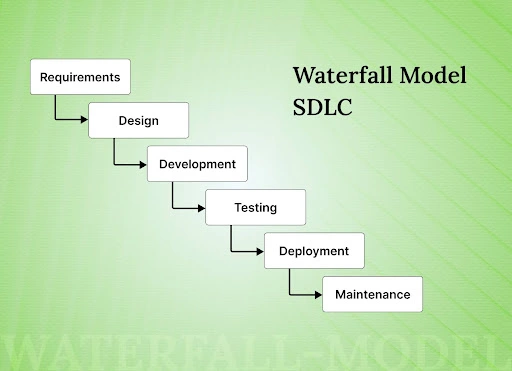
It follows a strict order of steps:
- Requirements – Define everything the project must do, up front.
- Design – Plan how the system will look and work.
- Development– Build the actual product.
- Testing– Test to ensure everything works as planned.
- Deployment: Launch the product after finalizing.
- Maintenance – Fix any issues and make improvements after release.
Waterfall is often applied in industries or projects where the requirements are clear, fixed, and unlikely to change, such as construction or manufacturing. Though one can say that, given the rapid pace of activities involved in modern software development, the model feels rather rigid. If a requirement undergoes change midway through a project, a cost-intensive adaptation process will follow.
Advantages of Waterfall Methodology
When teams require a simplistic channel, from start to finish, the Waterfall method offers a solid framework. It completes the work in formal and chronological phases, giving teams full confidence and little space for doubts when working on projects. In fact, the method continues to be favored in cases where scope, structure, and detailed planning are all important means towards delivering the method in clarity and control.
-
Clear Structure and Predictability
Waterfall follows a step-by-step process, where each phase must be completed before the next begins. This makes it easy to manage, track, and control, especially for project managers who prefer a straightforward workflow.
-
Defined Requirements and Scope
All requirements are gathered and documented at the beginning of the project. This leads to a clear scope, reduced ambiguity, and fewer mid-project surprises.
-
Accurate Cost and Time Estimates
Since all features and deliverables are planned early, it’s easier to estimate budgets and timelines with greater confidence.
-
Better for Stable, Predictable Projects
Waterfall is ideal for projects with fixed requirements or those in regulated industries where change is rare or discouraged.
-
Strong Documentation
Each phase produces detailed documentation, which is useful for future maintenance, training, or knowledge transfer to new team members.
-
Clear Goals and Deliverables
Since planning is done upfront, everyone knows the exact objectives and what success looks like from the start.
-
Focused Design Before Development
Design is completed before coding begins, which can reduce architectural issues and support methodical, structured development.
-
Scalable for Large Projects
Waterfall’s clear phase separation helps organize and manage complex, large-scale projects over long timelines.
-
Easier to Manage Multiple Projects
With defined phases and predictable outcomes, teams can plan and juggle multiple projects more efficiently.
Disadvantages of Waterfall Methodology
Despite its ordered approach, the Waterfall methodology in reality tends to find it difficult moving at the pace of changing trends in software development. The Standish Group's CHAOS Report puts the figure of successful Waterfall projects delivered on time, within budget, wherein all intended features are included merely 13%. More than half, at 59%, however, seem to have become outright failures, with 28% one step down the ladder in the “challenged” category, failing in one or two salient criteria. These numbers reveal serious drawbacks that make Waterfall less suitable for many types of projects today.
Below are the major disadvantages of the Waterfall methodology:
1. Limited Flexibility
Waterfall follows a strict, linear path. Once a phase is completed, it's difficult to go back and make changes. This becomes a major issue if new requirements emerge later or if stakeholders want revisions mid-project. In dynamic environments, this rigidity can slow progress and increase costs.
2. High Risk of Late Defect Detection
In Waterfall, testing usually occurs only after the development phase is complete. Since bugs or errors found late will be fixed by going back to some earlier phases, like design or requirements, the correction of these late-found bugs consumes more time and effort.

3. Poor Handling of Changing Requirements
Since all requirements are expected to be clearly defined at the start, there must be little room for scope adjustments. If a client's needs change over time or the market situation evolves, the Waterfall process cannot accommodate such changes easily, thereby potentially leading to delays, cost overruns, or the delivery of a product that at least marginally satisfies the client.
4. Low Customer Involvement
Clients are only actively involved during the start (requirements gathering) and end (delivery/testing) stages. This lack of continuous feedback increases the risk of misaligned expectations and dissatisfaction with the final product.

5. Longer Time to Market
Due to its linear property, teams must complete each phase before proceeding to the next one. In contrast with other iterative models like Agile, in which features are released on an incremental basis, delivery gets delayed.
6. Higher Cost of Changes
Making changes late in the project lifecycle—especially after development or during testing—can lead to major rework. This not only delays the release but also increases the overall budget significantly.

7. Not Ideal for Complex or Evolving Projects
Waterfall project management works best when the scope of a project is clear and unlikely to undergo changes. The main problem, though, is that more often than not, requirements tend to change, and this is common in real-world scenarios, especially for software development. Since Waterfall cannot accommodate change, it is not suitable for such projects.
8. Heavy Documentation
Each stage in the Waterfall requires thorough documentation, which may slow down the process and divert time away from actual development. While useful for tracking, too much paperwork can feel unnecessary in fast-moving projects.
Principles of Waterfall Methodology in Project Management
The Waterfall methodology is a traditional project management approach where work moves in a clear, step-by-step order. Each phase must be completed before moving to the next. It’s best used when project requirements are well-defined and unlikely to change. The focus is on planning, structure, and clear documentation.
Here are the core principles that guide the Waterfall model:
Key Principles of Waterfall Methodology
-
Sequential Phases
The project follows a fixed sequence: Requirements → Design → Development → Testing → Deployment → Maintenance. -
Detailed Upfront Planning
All project requirements and goals are defined in detail before any work begins. -
Clear Documentation
Every phase is documented carefully to ensure clarity and consistency throughout the project. -
No Overlapping of Phases
A new phase only starts after the previous one is completely finished. -
Minimal Client Involvement During Execution
Client feedback is mainly gathered at the start and at the end, not during development. -
Emphasis on Final Delivery
The full product is delivered at the end, with little room for mid-project changes. -
Strict Change Control
Once a plan is approved, changes are discouraged or require formal approvals. -
Well-Defined Roles and Responsibilities
Everyone on the team has specific roles with clear tasks and expectations.
Agile Methodology vs Waterfall Methodology
When managing projects, choosing the right development approach can significantly impact outcomes. The debate around Agile methodology vs Waterfall highlights two fundamentally different strategies—one adaptive and iterative, the other structured and sequential.
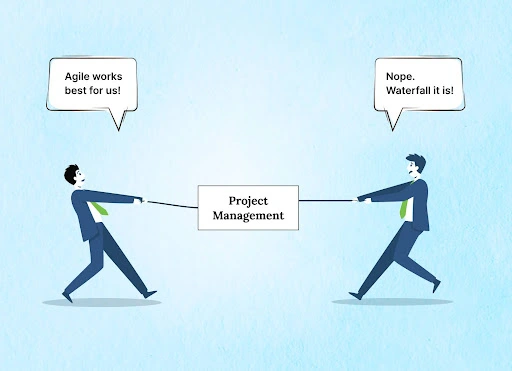
1. Project Flow and Structure
Agile follows an iterative and incremental model where the project is broken into small, manageable units called sprints (typically 1–4 weeks). Each sprint results in a usable product increment and allows for continuous improvements. In contrast, Waterfall is linear and sequential, in which each project phase (like requirements, design, implementation, testing, deployment) must be completed before moving to the next, making it rigid and difficult to backtrack. This core contrast defines the agile vs waterfall project execution style.
2. Approach to Change
The agile approach embraces change at any point in the development cycle. It assumes that requirements will evolve, especially in dynamic projects, and treats changes as a path to better value. On the other hand, the Waterfall approach resists change, as all requirements are defined at the beginning. Making adjustments mid-project often requires revisiting earlier stages, which is costly and time-consuming. This flexibility gap is another clear sign of how waterfall vs agile models serve different project environments.
3. Customer Involvement
In Agile, customer collaboration is continuous and active throughout the project lifecycle. Regular feedback is collected after each sprint, ensuring the product remains aligned with evolving needs. Waterfall, however, typically engages customers only at the beginning (for requirements gathering) and at the end (for final delivery), leaving little room for iterative feedback or course correction. This distinction is critical when evaluating agile vs waterfall in customer-centric development.
4. Delivery and Feedback
Agile delivers working software early and frequently, allowing stakeholders to review progress and suggest changes incrementally. This leads to faster time-to-market and more user-aligned products. Whereas Waterfall delivers the final product only at the end of the process, which delays feedback and often results in costly rework if the product doesn’t meet expectations.
5. Documentation
Agile prioritizes "working software over comprehensive documentation." It focuses on minimal but necessary documentation, created in parallel with development. In contrast, Waterfall emphasizes detailed documentation at every phase, which must be completed before moving forward, potentially slowing the project and risking outdated information. This is another point where waterfall vs agile differs in terms of process overhead and flexibility.
6. Team Structure and Communication
Agile promotes self-organizing, cross-functional teams where developers, testers, and designers collaborate closely. Communication is informal and frequent, with daily stand-ups and face-to-face discussions. Vice versa, Waterfall uses a more hierarchical and segmented team structure, where each phase is handled by separate specialized teams, often relying on formal communication and handoffs.
7. Testing Methodology
Agile integrates testing throughout the development process. Quality assurance happens continuously in every sprint, ensuring early bug detection. Oppositely, Waterfall postpones testing until after the implementation phase is completed, which means bugs are discovered late and may be harder or costlier to fix. This contrast reflects one of the most practical aspects of agile vs waterfall in real-world execution.
8. Risk Management
Agile mitigates risk continuously. Because feedback is frequent and deliverables are incremental, risks are identified and addressed early. On the other hand, in Waterfall, risk planning happens primarily at the beginning. If a risk materializes late in the process, it could have a significant impact, as it may require returning to completed phases.
9. Flexibility vs Predictability
Agile is flexible in scope but fixed in time, where teams commit to delivering what’s achievable in each sprint, adapting priorities as needed. Waterfall, on the other hand, fixes the scope early on and allows the timeline to adjust, which can lead to delays if unexpected challenges arise. This makes agile vs waterfall a question of adaptability vs control.
10. Best Use Cases
Agile methodology is ideal for dynamic, fast-changing environments such as software development, where rapid delivery, innovation, and flexibility are essential. In contrast, Waterfall methodology is more suitable for projects with clearly defined requirements and outcomes, such as construction, manufacturing, or projects requiring strict regulatory compliance.
Is Agile Better than Waterfall?
Agile and Waterfall are two different ways to manage projects. Neither one is always better—it depends on the project. Agile works best when things may change often, like in software development. It uses short cycles (sprints) to build and improve step by step. Teams can get feedback quickly and make changes as they go. Waterfall, on the other hand, follows a fixed plan. Each step must be finished before moving to the next. It’s better for projects with clear goals and little chance of change, like construction or regulated industries.
Studies show Agile is more successful in modern tech projects. The CHAOS Report says Agile has a 42% success rate, while Waterfall has only 13%. Waterfall projects also fail more often—about 59% compared to just 11% for Agile. Because of this, 86% of software teams now use Agile. Still, some teams use hybrid models to combine the best parts of both methods.
Waterfall Vs Agile Project Management: List Of Top IT Companies
Many top IT companies primarily use Agile methodologies due to their need for speed, adaptability, and continuous delivery in dynamic software environments. However, some organizations still apply the Waterfall methodology for projects with fixed scopes, regulatory requirements, or in early-stage planning where a structured approach is beneficial.
Top tech companies use the Agile methodology, like Apple, Barclays, Spotify, Itransition, Philips, LEGO Digital Solutions, and PlayStation Network, which follow Agile for its quick delivery, constant updates, and focus on customer feedback.
On the other hand, some companies still use the Waterfall methodology for projects that need strict planning and clear steps. Boeing, Oracle, Toyota, and Indigo are known to use Waterfall in such cases. Some companies, like Cisco, NASA, IBM, and Microsoft, use a hybrid approach, mixing both Agile and Waterfall depending on the type of project.
Wrapping up
Agile and Waterfall each have their strengths—Agile is ideal for fast-changing, flexible projects with ongoing feedback, while Waterfall suits structured, predictable projects with fixed requirements. Understanding both helps you choose the right fit based on your team, goals, and project type.
Many modern companies even combine both in a hybrid approach to balance flexibility with structure. The key is choosing a method that aligns with your project’s needs to ensure successful delivery and better results.
FAQs
Agile is better because it allows teams to work in small steps, get regular feedback, and adapt quickly to changes. This leads to faster results, better teamwork, and happier customers. As per the Chaos report, Agile projects had a 42% success rate. Waterfall projects had only a 13% success rate.
There’s no one-size-fits-all answer—Agile is better for projects needing flexibility and fast changes, like software development. Waterfall suits stable projects with fixed requirements and timelines. The best choice depends on your project goals, team setup, and how likely things are to change.
Agile is flexible and works in small cycles with regular feedback, allowing quick changes during the project. Waterfall is a step-by-step process with fixed stages and plans everything upfront. Agile suits changing needs, while Waterfall is better for projects with clear, stable requirements.
Agile doesn’t usually cost more than Waterfall. While it may seem pricier upfront due to ongoing feedback and changes, Agile helps catch issues early, avoids wasted work, and delivers value faster. In the long run, Agile often saves money and boosts success rates.
To choose between Agile and Waterfall, consider your project needs. Use Agile if requirements may change, feedback is ongoing, and quick delivery is important. Choose Waterfall if everything is clear from the start, changes are unlikely, and detailed planning with fixed steps is preferred.
Recent Blogs
Real World Digital Transformation Use Cases in Real Estate, Tech, and Recruiting
-
17 Dec 2025
-
6 Min
-
109
Where Paywalled Content and Subscription Marketing Are Really Heading in 2026
-
16 Dec 2025
-
7 Min
-
151


